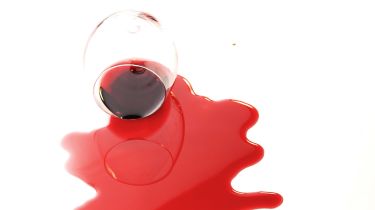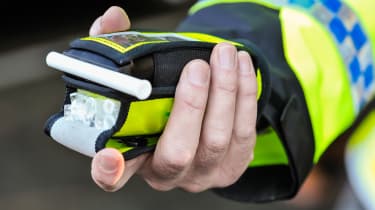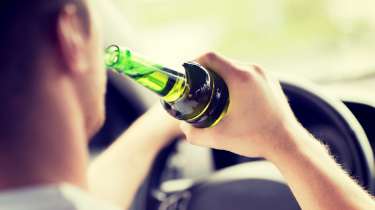Should the drink-drive limit be lower? Implications for safety, policing and the law
England and Wales have the highest drink-drive limit in Europe. But looking at Scotland, is reducing it really an effective way of cutting the carnage on our roads?

The onset of Christmas means many things for motorists, among them a sharper focus than at any other time of year on the dangers of drink-driving, due to the temptations of the party season.
We can all remember high-profile festive campaigns – some using shock tactics, others a softly-softly approach – warning of the dangerous consequences of driving while under the influence. This year, the spotlight on drink-driving is shining more brightly than ever, not least because the arrival of a new UK Government has prompted the British Medical Association (BMA) to amplify calls to cut the blood alcohol content (BAC) limit in England and Wales.
The current limit, which was established in 1967, is 80mg per 100ml of blood, or 0.08 per cent. As our table opposite illustrates, this is out of step with pretty much all of our European neighbours, with only the tiny Alpine state of Liechtenstein – which has a population of 40,000 (for context, broadly the same as Haywards Heath in West Sussex) – having the same limit.
The BMA’s preference is for a limit of 50mg of alcohol per 100ml (0.05 per cent) of blood, which is essentially the equivalent of one small glass of wine or beer. For new and commercial drivers, it favours an even lower threshold of 20mg. Ultimately, its goal is a limit of 20mg for everyone.
This stance is endorsed by some high-profile backers, among them road safety charity Brake, IAM RoadSmart, the Road Safety Foundation and the Royal Society for the Prevention of Accidents.
The 0.05 per cent limit also mirrors what’s been in place north of the border since December 2014, when Scotland decided to go it alone among the home nations and introduce its own legislation.
It seems hard to argue against a lower limit, particularly when you consider that drink-driving is still claiming an unacceptable number of lives on our roads. This was reflected in a Department for Transport (DfT) report published earlier this year, which revealed that in 2022, there were 300 deaths in Britain where at least one driver was over the limit – the highest total since 2009, when there were 380. Indeed, the DfT statistics showed that drink-drive fatalities made up 18 per cent of all road deaths in 2022, a bafflingly high figure when the risks are so obvious.
However, would a lower limit actually have the desired effect of reducing the carnage on our roads? This is where things become a little less clear-cut. In the decade since the limit was reduced in Scotland, research has shown that it has had no effect on lowering the number of accidents – despite the move being explicitly designed to make roads safer.

This was explored in a paper entitled ‘None For the Road? Stricter Drink Driving Laws and Road Accidents’, published in 2021 by academics Dr Jonathan James, from the University of Bath, and Professor Marco Francesconi, from the University of Essex.
Reflecting on their work, Professor Francesconi told Auto Express: “Our paper shows that stricter limits alone may not be sufficient to reduce drink-driving accidents if not accompanied by effective enforcement. In Scotland, for example, no notable increase in police enforcement or breath testing was observed, which likely reduced the potential impact of the law change.
“To improve road safety, a combination of stricter enforcement and making alternative transport options more accessible – such as improved public transport or ride-sharing – could be key.”
This rather sober assessment all seems a far cry from the optimism and positivity that were obvious when Auto Express visited Stirling in early 2015, to see how the first few months had passed with the new limit in place in Scotland. Then Police Scotland head of roads policing, chief superintendent Iain Murray, talked excitedly of “genuine behavioural change”, with fewer drivers recording positive breath tests, despite more being stopped. Motorists, meanwhile, admitted the new limit had made them reconsider their approach to socialising and driving.
Ten years down the line, the police force is more circumspect in its public comments – perhaps understandable given that in 2019, another study, funded by the National Institute for Health Research, also found that there had been no reduction in road accidents since the law was passed. It similarly concluded: “The researchers believe that poor enforcement of the new law, such as insufficient ongoing publicity after the initial campaign in 2014, and not enough random breath testing, is the most likely explanation.”
Whether Police Scotland has been given sufficient support by the Holyrood government, which passed the legislation, is a separate debate.But the current head of roads policing, chief superintendent Hilary Sloan, points out that during the force’s most recent festive drink and drug-driving campaign, the number of roadside tests carried out by police officers increased by 21 per cent to 3,219, compared with 2,568 the previous year. Detected offences also increased by 15 per cent, from 722 in 2022 to 831 in 2023.
Sloan told Auto Express: “We are part of a crucial partnership approach to road safety. Our officers are out every day educating road users and carrying out enforcement, and we will continue to work with partners to embed behaviour change that goes beyond enforcement.
“If you choose to drive after drinking alcohol, that decision can be life-changing for you and the people around you. We all have a responsibility to improve road safety.”
So, if lower limits alone don’t necessarily mean fewer accidents – as has been the case in Scotland – is there any point in introducing them? Despite the surprising results of his research, Professor Francesconi believes there is. He continued: “Although the findings of our study suggest that the reduction of the drink-drive limit in Scotland did not significantly impact road accidents, we are still broadly in favour of lowering the limit in England and Wales. This is because there is a consensus that no level of alcohol is entirely safe when driving.
“Reducing the limit sends a strong public message about the dangers of drink-driving, and aligns England and Wales with global best practices endorsed by the WHO [World Health Organization].”

There also has to be an acknowledgement that Scotland isn’t the best case study to call on, either. As the British Medical Association highlights, there have been examples elsewhere that show reducing rates can have the desired effect in cutting drink-driving. It cites a 2022 European Transport Safety Report, which showed how this had been achieved in some states in combination with superior enforcement and education.
And the BMA added: “There is evidence from a number of countries, including Australia, Brazil, France, Japan, Sweden, Lithuania, Estonia and Switzerland, where a reduction in BAC limit has contributed to a reduction in fatal collisions.”
Bearing this in mind, the association caveats its call to reduce the limit by saying the move must be accompanied by a string of complementary measures, such as sufficient police funding, enhanced testing abilities for road traffic officers and ensuring those drivers found over the limit take mandatory alcohol and drug safety awareness courses, or are even directed to treatment services where appropriate.
Beyond that, though, if England and Wales are really serious about tackling the scourge of drink-driving, there are a number of other measures that might be worth considering.
The option of lower limits specifically for young and inexperienced motorists is one that has already been adopted by some European countries, including France, Germany and the Republic of Ireland. While the finer details differ state by state, the general premise is the same: inexperienced drivers, or those under a defined age, are subject to lower limits than the rest of the driving population. Given that young people are particularly susceptible to the effects of alcohol, it is little surprise this strategy has gained momentum on the continent.
Spotchecks and random breath tests are another suitable tool. While this idea sits uneasily with some, it’s actually commonplace elsewhere, with research in 2023 showing that Britain conducted only five breath tests per 1,000 population – derisory compared with France (105) and Portugal (160), and miles behind Estonia (576).
The argument for the high-profile introduction of this tactic is that it would raise the perceived likelihood
of being caught, and so act as a sufficient deterrent for many.
Perhaps the biggest, easiest win, though, would be targeting the very worst drink-drivers – repeat offenders, or those who are happy to drive while significantly over the limit. Shocking statistics revealed via a Freedom of Information request from the Press Association in October revealed that a whopping 372 drivers across the UK had been caught at least four times over the limit in the 11 years leading up to 20 July 2024, and there were four who’d been prosecuted on a mind-boggling seven occasions.
This prompted calls for legislation that would require reoffenders to have their cars fitted with alcolocks – devices that require a driver breath sample before the engine can fire up.
RAC road safety spokesman Rod Dennis said: “It’s chilling to see a proportion of the driving public remain intent on taking charge of a car while intoxicated, even after they’ve already been caught by the police on at least one occasion. Drivers need to be prevented from drinking and driving in the first place, so there’s a good argument for mandating alcolocks be fitted to vehicles driven by anyone previously convicted.”
Professor Francesconi is another who believes that alcolocks have potential, calling them a “promising intervention”. He explained: “This is particularly relevant given that our research shows most drink-driving accidents are caused by individuals who have consumed significantly more than the legal limit.
“These systems are already in use in some US states, and are especially effective for persistent or high-risk offenders, helping to prevent reoffending by those who are most likely to cause serious accidents.”
Indeed, the perceived value of alcolocks in America is reflected by the fact that there are currently only six states – California, Indiana, Montana, Nevada, North Dakota and South Dakota – where they are not mandatory for some form of offender.
Whether we see them here, or new, lower limits in England and Wales, or indeed any other laws designed to curb drink-driving, remains unclear, although we do know that the latest Government is conducting a review
of road safety. Former transport secretary Louise Haigh told the House of Commons in October: “We are working on delivering the road safety strategy, the first in over a decade, to reduce antisocial behaviour, injuries and tragic deaths on our roads.”
For the time being, though, the best way to avoid the misery that drink-driving can cause is to simply avoid taking the wheel if you’re having a pint or glass of wine – something we should all bear in mind this festive season, whatever your local limit.
How England and Wales compare with the rest of Europe
The table below reveals just how out of step England and Wales are with a limit of 80mg of alcohol per 100ml of blood (or 0.08 per cent). The only country on the continent that can match them is Liechtenstein, while in three EU member states – the Czech Republic, Hungary and Romania – no alcohol is tolerated in the bloodstream whatsoever.
| Albania | 0.01% |
| Austria | 0.05% (0.01% in first two years of licence) |
| Belgium | 0.05% |
| Czech Rep. | Zero |
| Denmark | 0.05% |
| Estonia | 0.02% |
| France | 0.05% (0.02% in first two years and under-21s) |
| Hungary | Zero |
| Ireland | 0.05% (0.02% in first two years) |
| Italy | 0.05% (zero in first three years) |
| Liechtenstein | 0.08% |
| Netherlands | 0.05% (0.2% in first five years) |
| Norway | 0.02% |
| Poland | 0.02% |
| Portugal | 0.05% |
| Romania | Zero |
| Spain | 0.05% |
| Sweden | 0.02% |
Get more car news, video, pictures and exclusive content on our Facebook page...
Find a car with the experts





